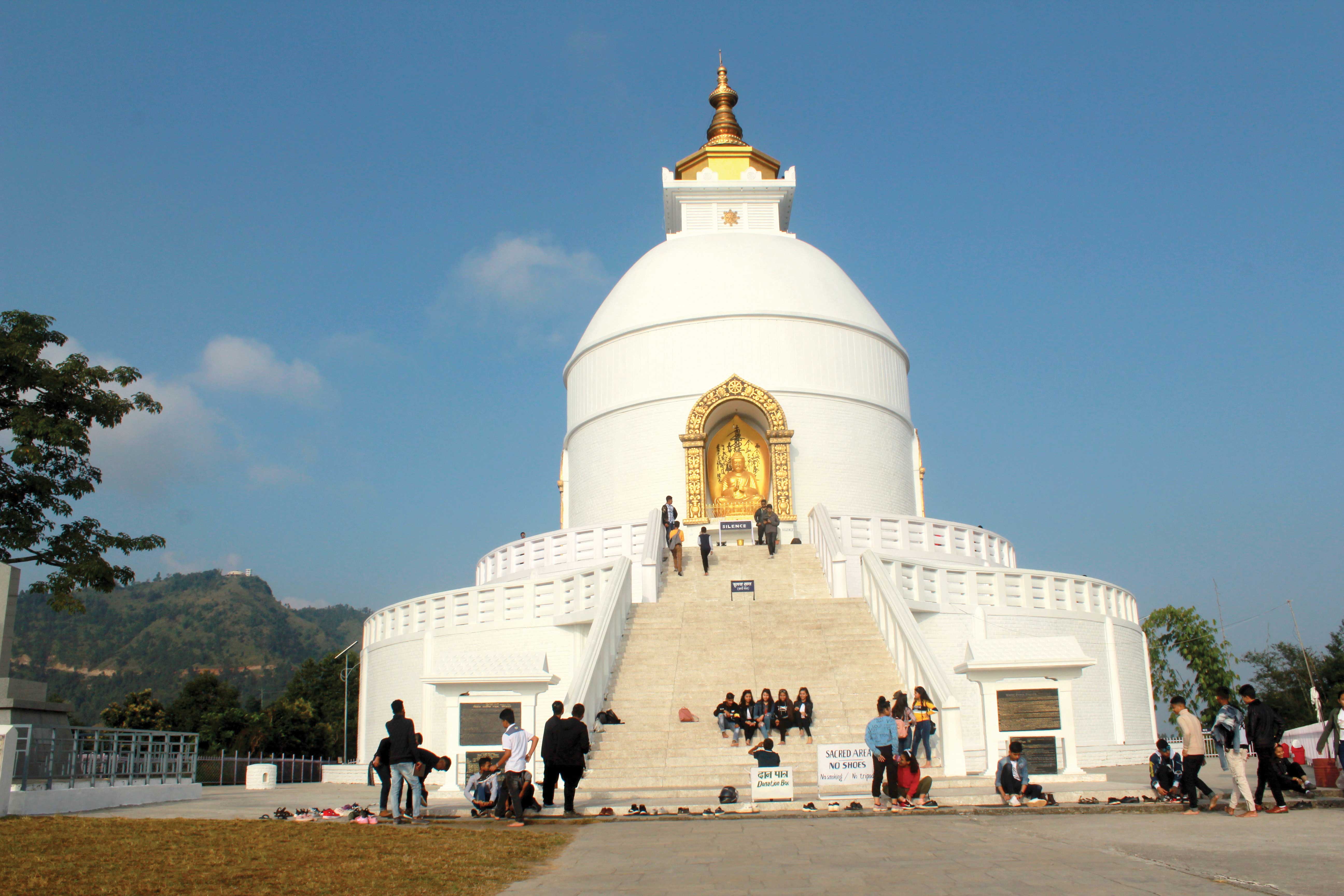Take a quiet moment to sit and reflect in the stillness as the sun slowly sets.
The sun is going down, it sets fire to the water where they meet. Orange smudges into the still green water, disturbed only by ripples from a fish’s tail. There is serenity in the buzz of quiet voices, muffled by the blanketing dusk that has fallen onto the stone steps; white, like jasmine flower in the dying light. Jasmine walls rise from jasmine steps, encasing the pokhari in a glimmering rectangle. The ancient stone watches another day end, alongside the people. They are everywhere, spread like seeds in the wind. Talking, laughing with their friends, their families. Some have come in pairs, couples that can be recognized from a mile away; either too enveloped in each other to notice the world, or too nervous.
I watch the sun, too. The way it leaves orange streaks in the clouds and a golden halo around my sister’s face as it shines on her hair. She is no angel, but perhaps, looking at her at that moment, I would be the only one to know. Her face, fierce as ever, stares intently at the water as she raises her arm to fling food into it, for the fish. Now we wait. They would come eventually, or so I thought. After fifteen minutes of waiting, I began to think I had been far too optimistic. We had fierce competition for the attention of the fish. I needed reinforcements.
With a renewed sense of purpose, I strode along the sides of the still water. Balancing precariously on the edges of the stone banks that are far too straight to be natural, playing a game I sometimes do with myself; try not to fall in. Though I have been told that the pokhari is only three meters deep, the water is cloudy. There is no way to tell its depth from the surface. Smooth as jade, and the same deep colour, the water gives nothing away. Irregularly, however, the jade will fold into concentric circles; logic would say a fish caused it. I, however, have always thought of the serpents from the old stories. I hurry on to rearm myself with the fish food.
The vendors sit in the shade of the gates on old sukuls, surrounded by a vivid display of shallow, plastic buckets. Red, blue, and green buckets piled atop each other, with no pattern like the bundles of change that lay alongside them, each containing a different food;puffy rice and other puffy things that look slightly suspicious. I buy the slightly suspicious ones. Pale yellow (though I’m fairly sure they were supposed to be white), the nuggets that are supposedly edible (to fish at least) are absolutely unrecognisable. It would be useless to try to discern what they once might have been, before they were overtaken by the puffiness that now defines them in my mind. So, instead of trying, I walk back along the stone steps to my sister. Resetting my optimism, I fling a handful of food into the water.
The light is fading fast now. Long shadows reach out to fold the landscape into the night. White walls turn to darkening grey, and the brown tiles on the gate roofs lose their distinction. Night is finally falling. I see the water start to ripple slowly in dark, glinting circles. Perhaps, this time, the fish are biting, but the sun has gone down.
Editor’s note: This famous pond is a landmark of one of the best preserved traditional towns of Kathmandu Valley, which is also famous for its yogurt.










